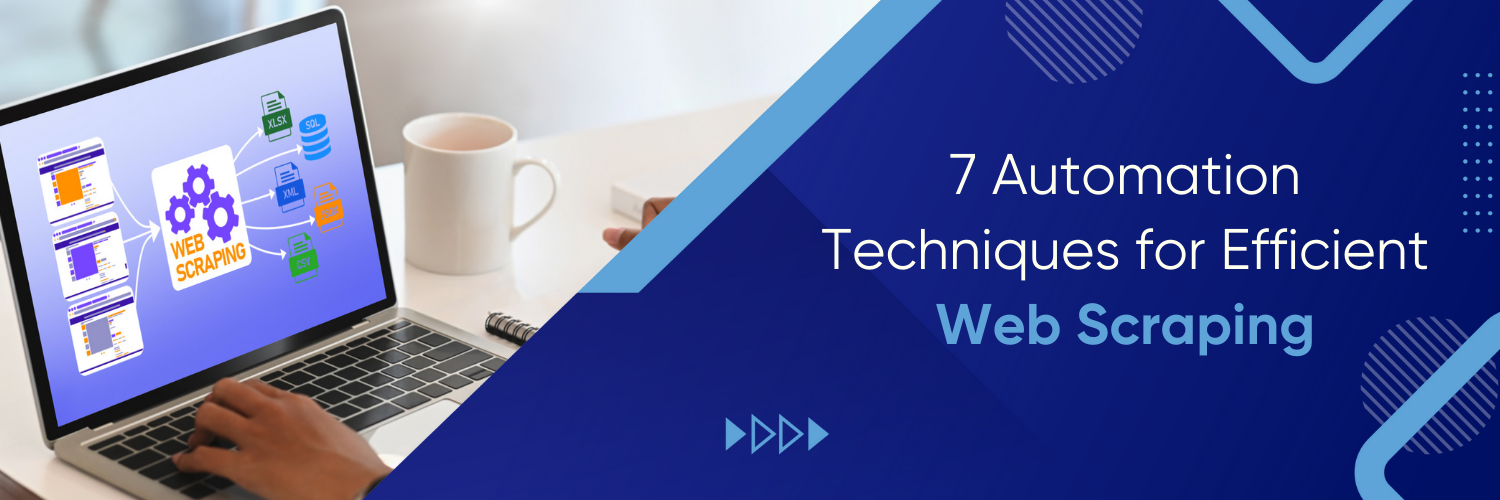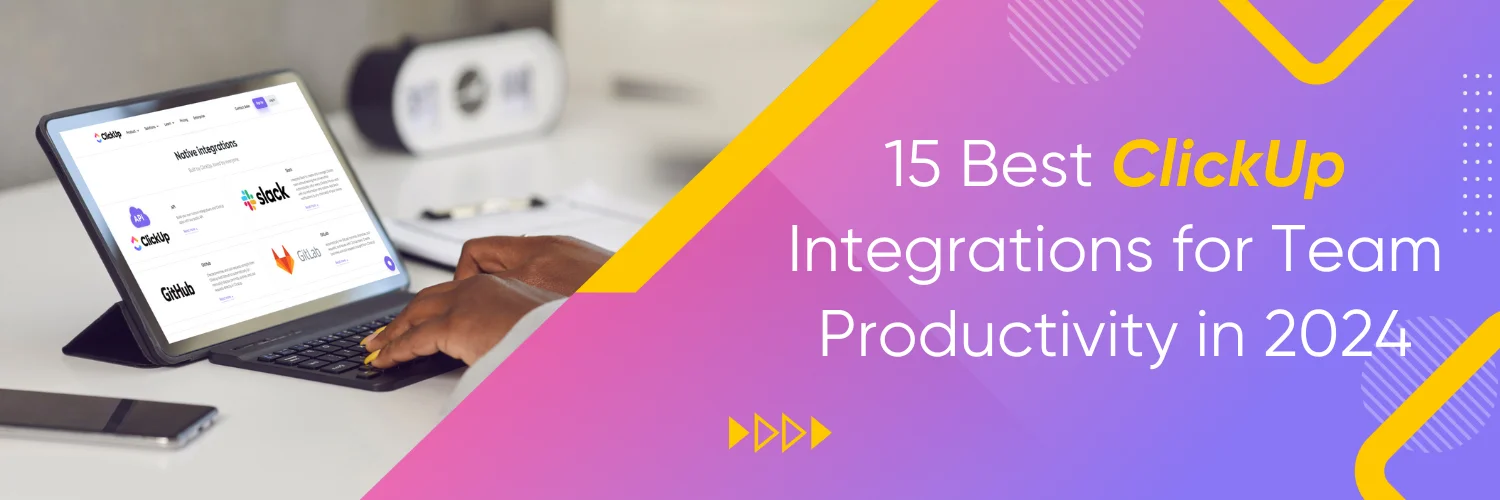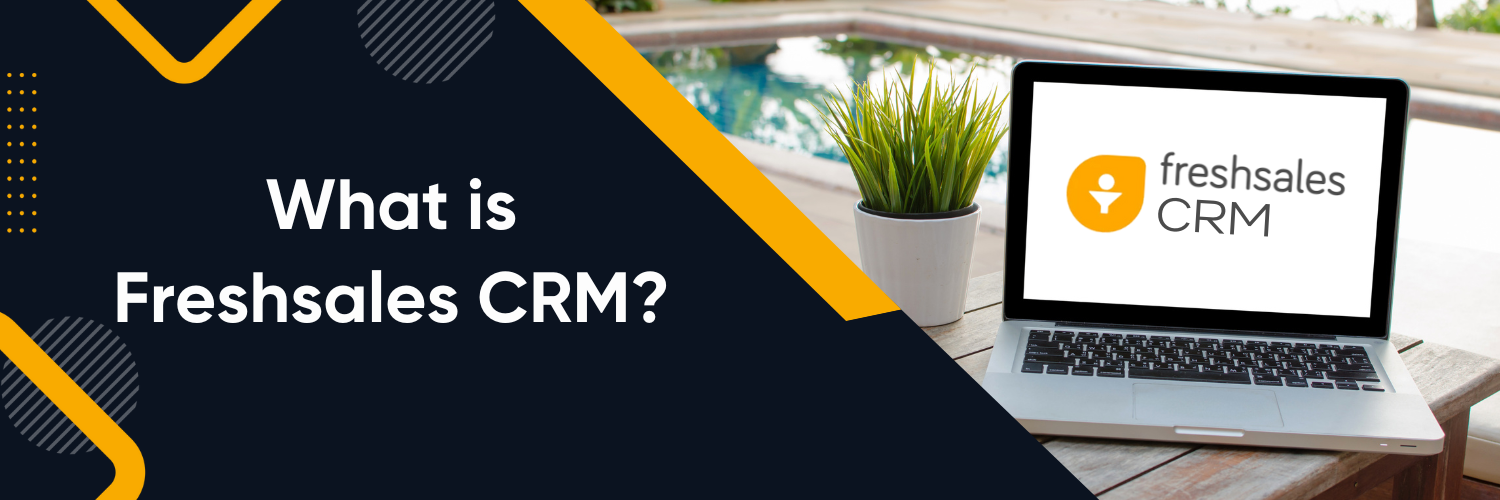What is Web Scraping?
Web scraping is a method used to extract information from websites. This process involves fetching the web page and then extracting the necessary information. Its applications are vast, ranging from data scientists collecting data for analysis, and marketers scraping customer reviews, to businesses extracting product prices for competitor analysis.
It’s become an integral technique in data analysis, research, marketing, and various other fields. As websites are becoming more complex, scraping becomes more challenging and time-consuming. This is where the role of automation enters, magnifying the efficiency of web scraping operations. Automating the process not only ensures swifter data extraction but also reduces the chances of errors, providing a seamless flow of accurate data.
The Role of Automation in Web Scraping
Manually scraping information can be an arduous task, especially when dealing with large-scale websites or requiring frequent updates. Automating this process comes with a dual advantage. Firstly, it dramatically conserves time and resources. No longer do individuals need to manually sift through pages of information, potentially missing out on crucial data. Secondly, automation decreases the chance of human error. Manually extracted data might be inconsistent or flawed, but automated tools ensure accuracy and uniformity.
7 Essential Automation Techniques
1. Rotating User Agents and Proxies
As webmasters become more aware of scraping activities, they employ methods to block or restrict access. This is where rotating user agents and proxies come into play. User agents tell the website about the browser and device being used, and by rotating them, a scraper can mimic different devices and browsers. Proxies, on the other hand, mask your IP address, making it difficult for websites to block you. By rotating proxies, you ensure that even if one IP gets banned, the scraping task continues unhindered.
In the ever-evolving landscape of automation, staying ahead of the game is crucial. Whether you’re a seasoned developer or just dipping your toes into the world of automation, one of the fundamental techniques you should master is the art of rotating user agents and proxies. This essential tactic not only enhances the reliability of your automated processes but also ensures that you stay under the radar and avoid being blocked or flagged by websites or online services.
User agents and proxies are the unsung heroes of automation, and understanding how to leverage them effectively can be a game-changer in your automation endeavors. In this blog post, we’ll delve into the significance of rotating user agents and proxies, explore why they are essential, and provide insights into how to implement these techniques for seamless automation.
First and foremost, let’s clarify what user agents and proxies are:
- User Agents: A user agent is a piece of information that your web browser sends to websites to identify itself. It typically includes details about the browser type, operating system, and sometimes even the device used to access the website. In the context of automation, user agents can be customized to mimic different browsers and devices. This is essential because many websites track and analyze user agent data to detect automated requests.
- Proxies: Proxies act as intermediaries between your automation script and the target website or online service. When you send a request through a proxy server, it appears as if the request is originating from the proxy server’s IP address rather than your own. This anonymizes your requests and allows you to make multiple requests from different IP addresses, a crucial aspect of avoiding detection and IP blocking.
Now, let’s explore why rotating user agents and proxies are essential for successful automation:
- Avoid Detection and IP Blocking: Websites are becoming increasingly sophisticated in detecting and blocking automated traffic. By rotating user agents and proxies, you can simulate a variety of user behaviors, making it difficult for websites to recognize your automation as non-human activity. Moreover, switching IP addresses with proxies prevents you from getting banned or temporarily blocked, as websites won’t be able to trace all your requests back to a single source.
- Enhance Reliability: Websites may impose rate limits or restrictions on the number of requests you can make from a single IP address or user agent. Rotating user agents and proxies allow you to distribute your requests across multiple identities, ensuring that you can collect data or perform tasks consistently without interruptions.
- Imitate User Diversity: User diversity is a crucial aspect of automation. Different users access websites using various browsers, devices, and locations. By rotating user agents and proxies, you can mimic this diversity, making your automation script blend in seamlessly with genuine user traffic.
- Overcome Geographic Restrictions: Some websites or online services may restrict access based on geographical location. Proxies can help you circumvent these restrictions by routing your requests through servers in different regions or countries, providing you with access to geo-restricted content.
Now that we’ve established the importance of rotating user agents and proxies, let’s discuss how to implement these techniques effectively:
- Use User Agent Rotation Libraries: Many programming languages offer libraries or modules that simplify user agent rotation. These libraries allow you to specify a list of user agents, and they automatically switch between them for each request. Popular libraries like “User-Agent Switcher” for Python can be a great starting point.
- Choose Reliable Proxy Providers: When it comes to proxies, quality matters. Opt for reputable proxy providers that offer a diverse range of IP addresses from various locations. These providers often offer rotating proxies that automatically switch IP addresses at predefined intervals.
- Monitor and Adapt: Automation is an ongoing process. Keep an eye on the performance of your user agent and proxy rotation strategies. If you notice any issues or changes in website behaviour, be prepared to adjust your rotation patterns accordingly.
2. Scheduled Scraping
One of the remarkable benefits of automating web scraping is the ability to schedule tasks. Websites update their data frequently, and staying updated is crucial. By setting up scheduled scraping, data can be extracted at specific intervals, ensuring you always have the most recent information. Tools like Scrapy, Beautiful Soup, and Selenium can be integrated with task schedulers or cloud platforms for this purpose.
Scheduled scraping is one of the seven essential automation techniques that can significantly streamline your workflow and boost productivity. In the digital age, data is a valuable resource, and staying up-to-date with the latest information is crucial for businesses, researchers, and individuals alike. Scheduled scraping allows you to automate the process of extracting data from websites or online sources at predetermined intervals, ensuring that you always have access to the most current and relevant information.
One of the primary advantages of scheduled scraping is its ability to save you time and effort. Instead of manually visiting websites, copying data, and pasting it into your documents or databases, you can set up automated scripts or tools to do this for you. Whether you need to monitor stock prices, track social media mentions, or gather market research data, scheduled scraping can handle these tasks without requiring constant supervision.
3. Auto Pagination Handling
Many websites paginate their content, displaying it across various pages. Auto pagination handling enables the scraper to automatically navigate to subsequent pages, ensuring comprehensive data extraction. This avoids the need to manually code for each page, making the process efficient and seamless.
Pagination, the practice of breaking content into multiple pages, is a common feature in websites and applications to improve user experience and manage large datasets. However, handling pagination can be a tedious and error-prone task when it comes to web scraping, data extraction, or automation in general. This is where the third essential automation technique, Auto Pagination Handling, comes into play. In this blog post, we’ll delve into the intricacies of automating the handling of pagination in your automation workflows and why it’s crucial for efficiency and accuracy.
First and foremost, why do we encounter pagination in the digital landscape? Well, it’s all about managing content effectively. When you have a website or application that displays a long list of items, such as search results, product listings, or news articles, it’s not practical to load everything onto a single page. It would lead to slow loading times, poor user experience, and potential performance issues. Instead, content is divided into smaller, manageable chunks, often spread across multiple pages.
For instance, consider an e-commerce website with thousands of products. Displaying all of them on one page would overwhelm users and make the site sluggish. So, the website implements pagination, showing a limited number of items per page and providing navigation buttons to access the next or previous pages. As a result, users can easily browse through the products without feeling overwhelmed.
4. Error Detection and Auto Retry Mechanisms
Errors are inevitable in the scraping process, be it due to server issues, changes in website structure or other unforeseen problems. Implementing error detection can recognize these anomalies, while the auto-retry mechanism ensures that the scraper attempts to extract the data again after a failure, minimizing data loss and ensuring continuity.
Automation, while incredibly powerful, is not immune to errors. Be it in the form of unexpected system failures, network glitches, or software bugs, errors can and do occur. The consequences of these errors can range from minor inconveniences to critical disruptions that affect businesses and operations. This is where error detection mechanisms come into play. Their primary purpose is to identify when something has gone wrong within an automated process.
One of the fundamental aspects of error detection is the ability to monitor processes in real-time. Automation systems are equipped with sensors and monitors that constantly keep an eye on the various stages of a task or process. These monitors are programmed to detect anomalies or deviations from the expected workflow. When such irregularities are detected, the error detection mechanism triggers a response. This response can take various forms, depending on the nature and severity of the error.
5.Content Change Detection
Some web pages update their content regularly. Instead of scraping them routinely, an efficient method is to detect content changes. By recognizing updates or modifications, scrapers can then only access these pages when new data is available, optimizing the scraping process and conserving resources.
Content Change Detection is one of the seven essential automation techniques that have become increasingly important in our digital age. In a world where information is constantly evolving and being updated, the ability to monitor and detect changes in content is crucial for a wide range of applications. Whether you’re a content creator, a data analyst, or a cybersecurity expert, understanding and implementing effective content change detection strategies can significantly enhance your efficiency and effectiveness.
At its core, content change detection involves the systematic comparison of two versions of digital content to identify any discrepancies or modifications. This technique is widely used in various domains, such as web scraping, data monitoring, and security monitoring. Let’s delve deeper into why content change detection is so important and explore some essential techniques for its implementation.
6. Automated CAPTCHA Solving
CAPTCHAs are tests to determine if the user is human, often employed to prevent automated access. For a scraper, CAPTCHAs can be a roadblock. However, there are tools and services like 2Captcha and Anti-Captcha that can help automate the CAPTCHA-solving process, allowing uninterrupted scraping.
Automated CAPTCHA solving is a crucial aspect of modern automation techniques, particularly in the context of web scraping, data extraction, and other automated tasks that involve interacting with websites. CAPTCHAs, which stand for “Completely Automated Public Turing test to tell Computers and Humans Apart,” are security mechanisms designed to differentiate between human users and automated bots. They typically consist of distorted characters or images that users must decipher and enter correctly to prove their humanity.
While CAPTCHAs serve a legitimate purpose in deterring bots from spamming or maliciously accessing websites, they can pose a significant challenge for automation enthusiasts and developers who want to streamline their online activities. This is where automated CAPTCHA solving comes into play, as it enables the automation of tasks that involve interacting with websites protected by CAPTCHAs.
One essential technique for automating CAPTCHA solving involves the use of Optical Character Recognition (OCR) technology. OCR software is capable of recognizing and extracting text from images, making it a valuable tool for deciphering text-based CAPTCHAs. Automation scripts can be programmed to capture the CAPTCHA image, process it through an OCR engine, and then submit the recognized text to the website, effectively bypassing the CAPTCHA challenge.
7. Storing Data Efficiently with Automation
Once data is scraped, it needs to be stored, parsed, and organized. Automation plays a crucial role here, enabling data to be saved in structured formats like CSV, JSON, or databases. This not only ensures easy access and analysis but also reduces the chances of data corruption or loss.
Storing data efficiently is a critical aspect of automation that often goes overlooked but plays a pivotal role in the success of any automated system. In the age of big data, organizations are inundated with vast amounts of information generated from various sources. This data can include customer information, transaction records, sensor data, and much more. To harness the power of this data and make informed decisions, it’s imperative to store it efficiently.
One of the first considerations in storing data efficiently is choosing the right data storage technology. Traditional relational databases have been the go-to choice for many years due to their structured nature and ability to handle complex queries. However, as data volumes have grown, newer technologies like NoSQL databases, columnar stores, and distributed file systems have gained popularity. These alternatives offer scalability, flexibility, and often better performance for specific use cases, making them essential tools in the automation toolbox.
The Risks and Ethical Considerations of Web Scraping
Legal Boundaries in Web Scraping
While web scraping is a powerful tool, it’s essential to be aware of legal boundaries. Every website has terms and conditions, and many include clauses related to scraping. Moreover, it’s crucial to respect the robots.txt file of a website, which provides guidelines on what can and can’t be scraped.
Ethical Automation Practices
Beyond legalities, there’s the ethical side of scraping. Overloading servers with frequent requests can affect a website’s performance. It’s crucial to maintain reasonable intervals between requests. Additionally, respecting copyright and data privacy is paramount. Always ensure you have permission to use the data and that it’s used responsibly.
Conclusion
The future of web scraping lies in automation. As the digital landscape evolves, the efficiency and ethical practices in scraping will dictate its sustainable future. Embracing these techniques ensures not only a wealth of data but also the responsible and effective use of that data.
In the digital era, efficient web scraping is more than a luxury; it’s a necessity. Mastering automation techniques not only ensures a consistent flow of data but also elevates your business strategies. If you’re keen on supercharging your web scraping endeavours and propelling your business with digital solutions, consider partnering with Ubique Digital Solutions. With our expertise, your data extraction will be smoother, swifter, and more strategic. Reach out to us today.
FAQs
Q: What is the best tool for automating web scraping tasks?
Different tools cater to various needs. Tools like Scrapy are versatile and powerful, while Beautiful Soup is great for beginners. Your choice depends on your specific requirements and expertise.
Q: How often should I rotate user agents and proxies?
Ideally, after every few requests. This frequency minimizes the chances of being detected and banned.
Q: What to do if a website changes its structure frequently?
Implement content change detection and regular checks. Update your scraping scripts accordingly to adapt to changes.
Q: Is automated CAPTCHA solving legal?
It’s a grey area. While CAPTCHA-solving services exist, using them might violate the terms of service of some websites.
Q: How can I ensure my web scraping activities remain ethical?
Always respect the website’s robots.txt, don’t overload servers, and ensure you have the right to use the extracted data.























